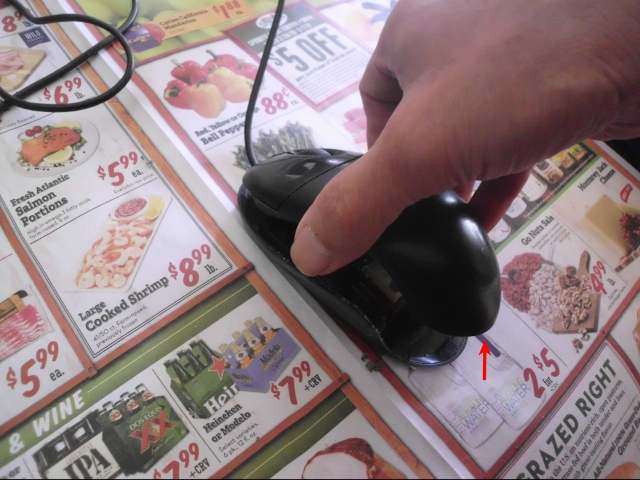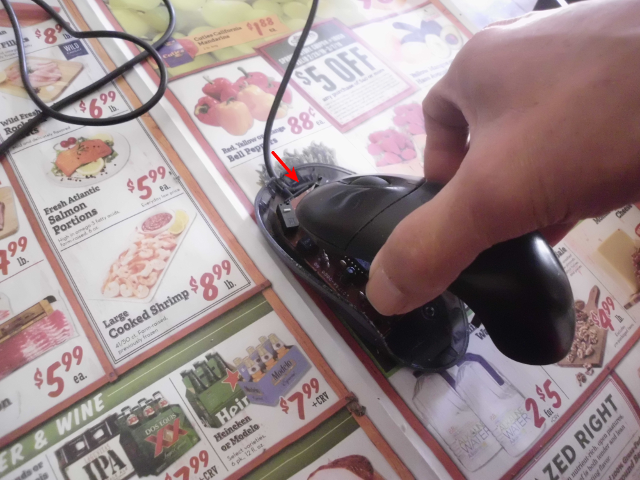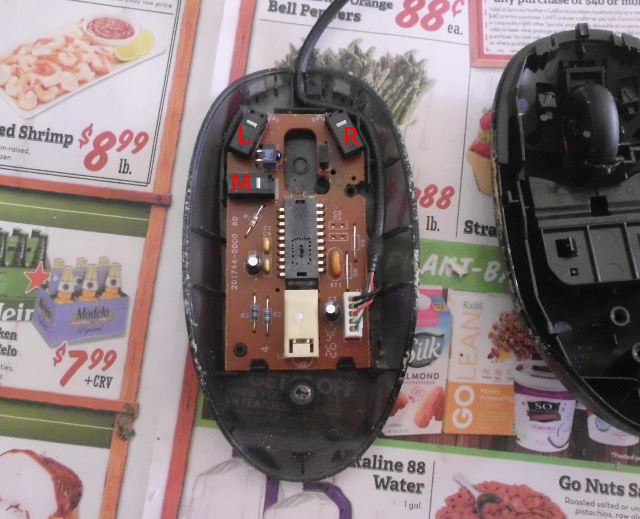
My computer has a mouse that is probably at least 10 years old. It’s an optical mouse (no ball), so still tracks fine after all these years. But lately, the left button has been double-clicking sometimes when I only click once. This had annoying effects, like opening a document when all I wanted to do was drag it to the trash, or making a drop-down menu appear and disappear instantly. Only the left button had the problem, and it was slowly growing worse over time. Conclusion: it’s the physical mouse wearing out.
Any normal person would have simply replaced the mouse at this point. A new one would only be a few dollars, and a solid used one might be a dollar at a garage sale or flea market. But I enjoy fixing things.






I suppose I could show the resoldering and reassembly steps, but the pictures would just look the same as the ones above.
Anyway, the fix worked.